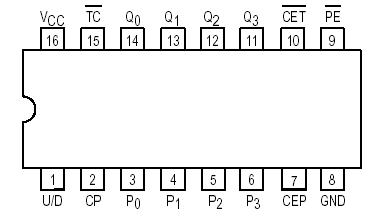SN54/74LS169: PinoutDescriptionThe SN54/74LS168 and SN54/74LS169 use edgetriggered D-type flip-flops that have no constraints on changing the control or data input signals in either state of the Clock. The only r...
floor Price/Ceiling Price
- Part Number:
- SN54/74LS169
- Supply Ability:
- 5000
Price Break
- Qty
- 1~5000
- Unit Price
- Negotiable
- Processing time
- 15 Days
SeekIC Buyer Protection PLUS - newly updated for 2013!
- Escrow Protection.
- Guaranteed refunds.
- Secure payments.
- Learn more >>
Month Sales
268 Transactions
Payment Methods
All payment methods are secure and covered by SeekIC Buyer Protection PLUS.

 SN54/74LS169 Data Sheet
SN54/74LS169 Data Sheet








